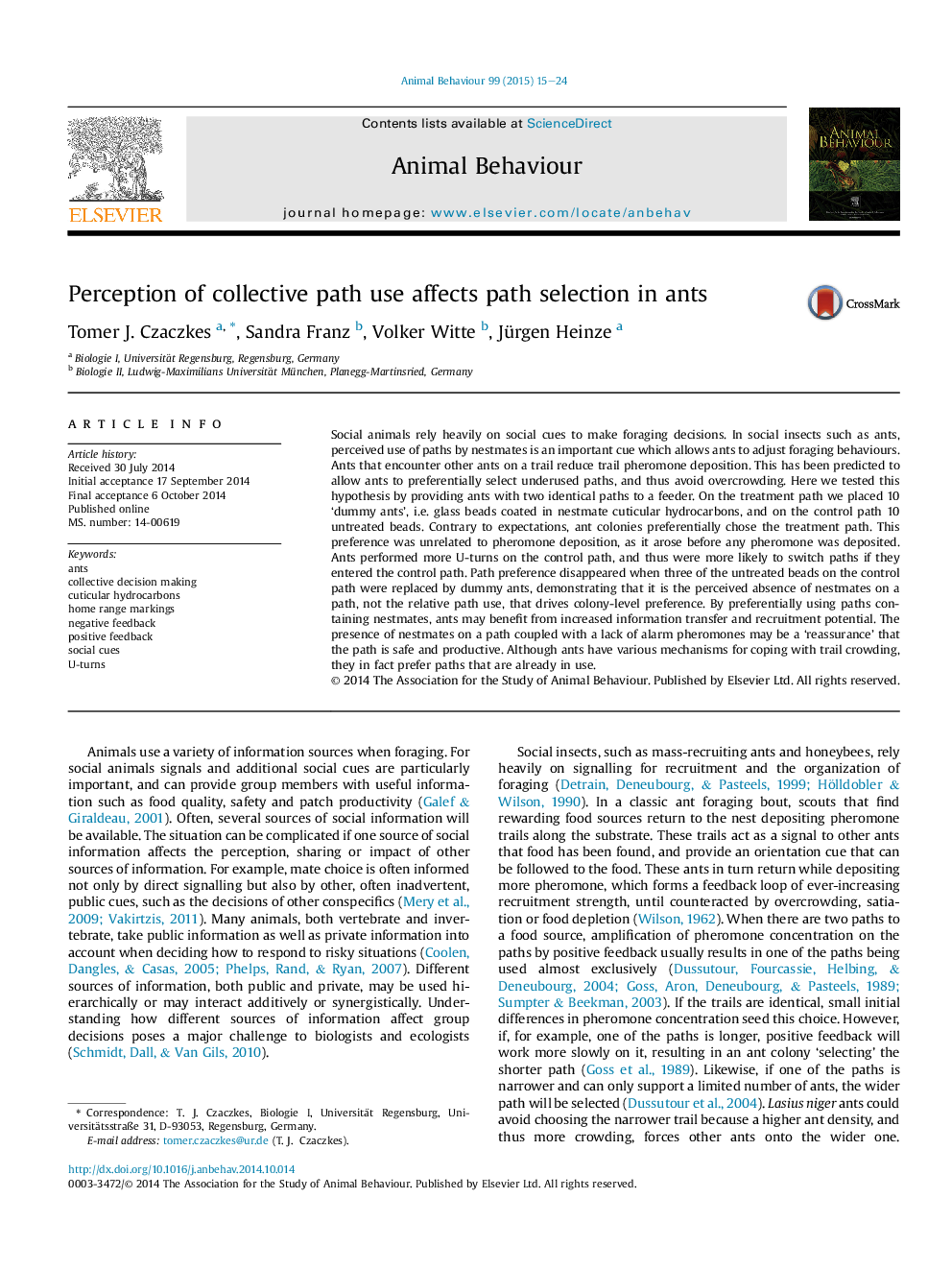| کد مقاله | کد نشریه | سال انتشار | مقاله انگلیسی | نسخه تمام متن |
|---|---|---|---|---|
| 8490178 | 1552229 | 2015 | 10 صفحه PDF | دانلود رایگان |
عنوان انگلیسی مقاله ISI
Perception of collective path use affects path selection in ants
ترجمه فارسی عنوان
درک مسیر جمعی بر انتخاب مسیر در مورچه ها تاثیر می گذارد
دانلود مقاله + سفارش ترجمه
دانلود مقاله ISI انگلیسی
رایگان برای ایرانیان
کلمات کلیدی
موضوعات مرتبط
علوم زیستی و بیوفناوری
علوم کشاورزی و بیولوژیک
علوم دامی و جانورشناسی
چکیده انگلیسی
Social animals rely heavily on social cues to make foraging decisions. In social insects such as ants, perceived use of paths by nestmates is an important cue which allows ants to adjust foraging behaviours. Ants that encounter other ants on a trail reduce trail pheromone deposition. This has been predicted to allow ants to preferentially select underused paths, and thus avoid overcrowding. Here we tested this hypothesis by providing ants with two identical paths to a feeder. On the treatment path we placed 10 'dummy ants', i.e. glass beads coated in nestmate cuticular hydrocarbons, and on the control path 10 untreated beads. Contrary to expectations, ant colonies preferentially chose the treatment path. This preference was unrelated to pheromone deposition, as it arose before any pheromone was deposited. Ants performed more U-turns on the control path, and thus were more likely to switch paths if they entered the control path. Path preference disappeared when three of the untreated beads on the control path were replaced by dummy ants, demonstrating that it is the perceived absence of nestmates on a path, not the relative path use, that drives colony-level preference. By preferentially using paths containing nestmates, ants may benefit from increased information transfer and recruitment potential. The presence of nestmates on a path coupled with a lack of alarm pheromones may be a 'reassurance' that the path is safe and productive. Although ants have various mechanisms for coping with trail crowding, they in fact prefer paths that are already in use.
ناشر
Database: Elsevier - ScienceDirect (ساینس دایرکت)
Journal: Animal Behaviour - Volume 99, January 2015, Pages 15-24
Journal: Animal Behaviour - Volume 99, January 2015, Pages 15-24
نویسندگان
Tomer J. Czaczkes, Sandra Franz, Volker Witte, Jürgen Heinze,
